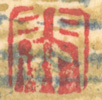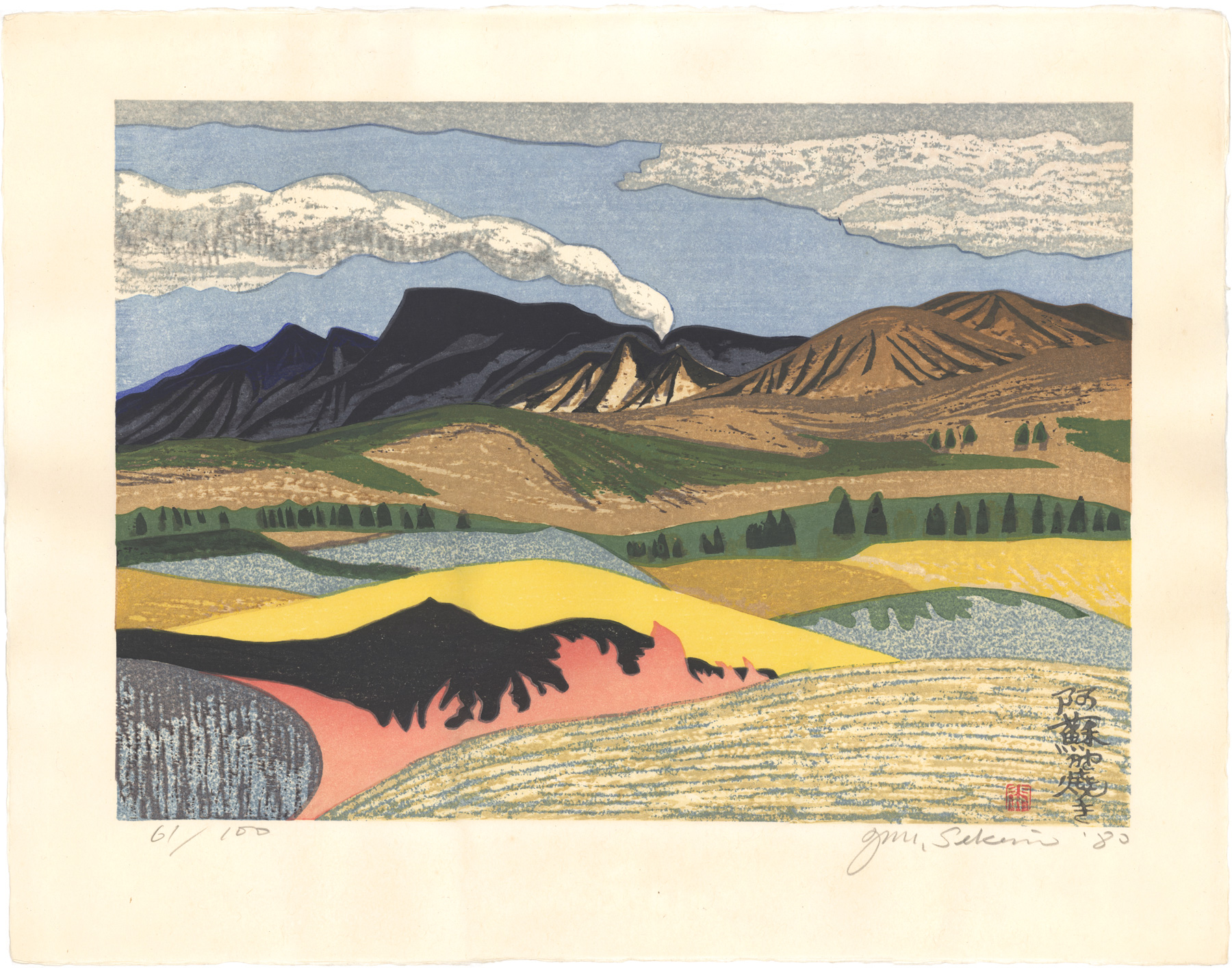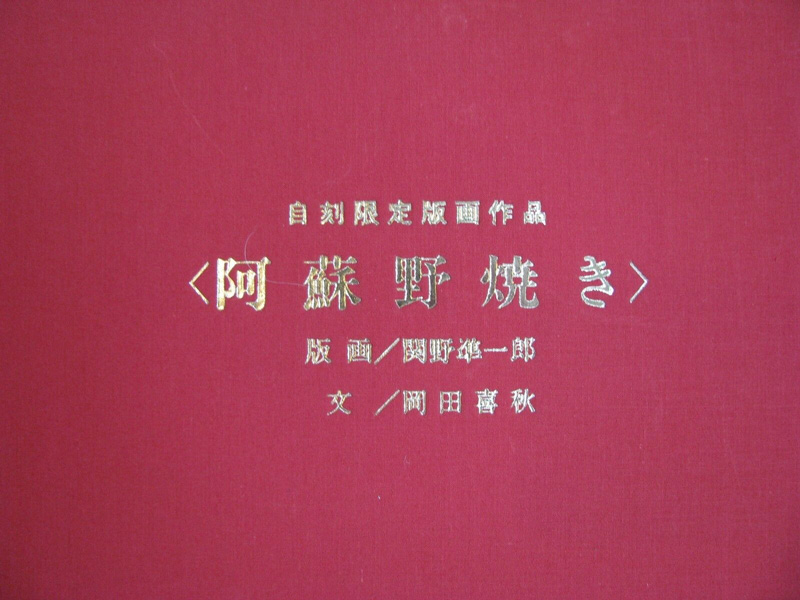About This Print
Noyaki (野焼き) isthe name given to the process of the controlled burningof the grasslands of Aso (the largest active volcano in Japan). Grassland burninghas been documented for over a 1000 years in and around the Aso caldera. Theburning prevents shrubs and trees from taking over the land and so preservesthe grasslands not only for the cattle and horses that graze there but also asa unique landscape for Aso’s visitors.
For a lovely video of the grasslands burning on Aso see https://vimeo.com/135831118
Where there's a spark, there's green tourism
Source: excerpted from the article appearing in the THE JAPAN TIMES MARCH 21, 2001 by Stephanie Gartelman
Aso's landscape was formed by volcanic activity around 50,000 years ago. Forests once cover these 1,000 meter-high plateaus, but cultivation of the area over centuries by humans created the present-day grassy plains.
Culling forests for agricultural purposes is usually associated with environmental destruction. But according to environmental groups, including the Kyushu branch of the Environmental Agency, Aso’s well-being today depends on cultivation practices such as noyaki. If the practices are abandoned, the land does not return to its original state; instead, a heavy buildup of susuki (Japanese pampas) grass results. Extremely slow to decompose, buildups of susuki do not return sufficient nutrients to the soil. Soil quality degrades, leading to land erosion after about four or five years, as has been observed at some properties in the area.
Noyaki is by no means unique to Aso or Japan. Burning off the dead pampas growth encourages new growth, and the resulting healthy roots help nurture the soil and prevent land erosion. Sound grasslands and soil form part of Aso’s ecosystem. Because rainfall is filtered by soil and tree roots and then drawn into rivers and lakes, the health of this “filter” is essential, especially since many of Kyushu’s major rivers are sourced from the Aso region.
The sight of the several-kilometer-long walls of noyaki fire moving across Aso’s hills at a rate of around 180 meters per minute, billowing from the heat of 660- to 800-degree flames, is an awesome one. A grueling task, noyaki requires about 7,600 workers to burn over 10,000 hectares of land every March and October and clear around 640 km of firebreaks in advance.
Print Details
| IHL Catalog | #2237 |
| Title | Aso noyaki 阿蘇野焼き |
| Series | |
| Artist | Sekino Jun’ichirō (1914 - 1988) |
| Signature |  |
| Seal |  |
| Publication Date | 1980 |
| Edition | 61/100 |
| Publisher | self-published |
| Carver | self-carved |
| Printer | printed by one of the artist's studio printers |
| Impression | excellent |
| Colors | excellent |
| Condition | excellent |
| Genre | sosaku hanga (creative prints) |
| Miscellaneous | paper watermarked with artist's name in center of bottom margin |
| Format | |
| H x W Paper | 16 5/8 x 21 5/8 in. (42.2 x 55.1 cm) |
| H x W Image | 12 5/8 x 18 in. (32.1 x 45.7 cm) |
| Collections This Print | |
| Reference Literature | |



